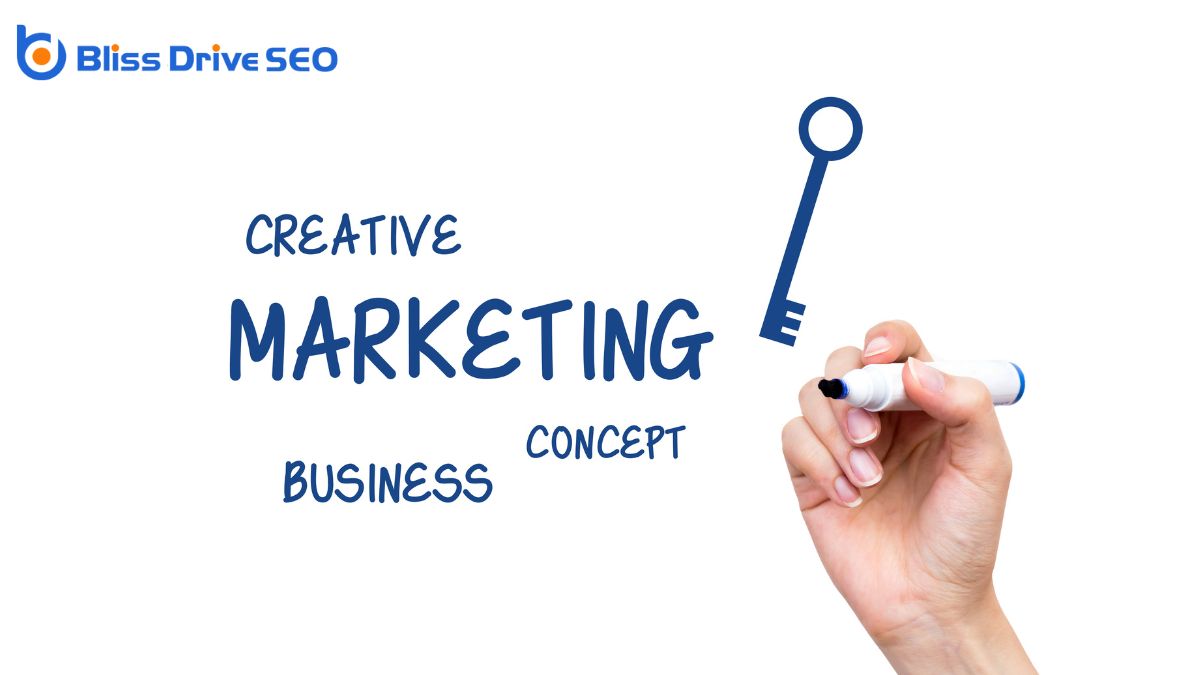Learn More About Us

To write a content marketingA strategic approach focused on creating and distributing valuable, relevant, and consistent content... plan, start by defining clear, measurable goals and understanding your audience. Create personas and use surveys to gather insights. Conduct a content auditA thorough review of existing content to assess its effectiveness and identify gaps. to evaluate current strengths and weaknesses, then decide on content types that align with your goals and audience preferences. Develop a content calendarA schedule for planning, creating, and publishing content. for consistency. Allocate a budget thoughtfully, choosing the best platforms for distribution. Set Key Performance Indicators to measure success and craft engaging content tailored to your audience. Regularly monitor and refine your strategy by gathering feedback and tracking competitor strategies. Explore further for detailed guidance and tips.

When it comes to crafting a successful content marketing plan, defining your goals is essential. Without clear objectives, your efforts can easily become scattered and ineffective. Start by asking yourself what you want to achieve. Are you looking to increase brand awarenessThe extent to which consumers are familiar with the qualities or image of a particular brand., generate leads, or drive more traffic to your website? Be specific about these goals because they'll guide every decision you make moving forward.
Next, make certain your goals are measurable. You can't assess your progress if you don't have benchmarks against which to measure. For instance, instead of saying you want more website traffic, specify that you want a 20% increase in visitors over the next six months. This way, you can track your progress and adjust your strategies as needed.
Additionally, confirm your goals are realistic and achievable. While it's great to aim high, setting unattainable targets can leadA potential customer referred by an affiliate who has shown interest in the product or service but h... to frustration and burnout. Consider your current resources and constraints, and set goals that stretch your capabilities without setting you up for failure.
To create content that truly resonates, you need to understand your audience inside and out. It's not just about knowing their age, gender, or location; it's about grasping their desires, challenges, and motivations. Start by identifying who they are. Are they professionals seeking industry insights, or are they everyday consumers looking for solutions?
Think about what keeps them up at night and how your content can provide relief or answers.
Engage with your audience through surveys, social media interactions, and feedback forms. Ask direct questions to uncover their needs and preferences. Listen actively to their responses and observe patterns in their behavior. This will provide you with valuable insights into what they value most.
Consider creating audience personas. These fictional profiles represent different segments of your audience, giving you a clear picture of their traits, preferences, and pain points.
With personas, you can tailor your content to speak directly to each group's needs.
Immerse yourself in the process of conducting a content audit by evaluating what you currently have. This isn't just a simple inventory; it's an opportunity to understand the strengths and weaknesses of your existing content. Start by gathering everything you've published. Consider blog posts, videos, infographicsVisual representations of information, data, or knowledge intended to present complex information qu..., and any other formats you've used. Then, analyze the performance of these pieces.
To streamline this process, follow these four steps:
Selecting content types is an essential step in shaping your content marketing strategy. It involves deciding what kind of content will best engage your audience and align with your goals. Different types of content resonate differently; for instance, blog posts are great for detailed information, while infographics can simplify complex data. Knowing your audience's preferences is key. Do they prefer watching videos or reading articles? Understanding this helps you choose the right mix.
Consider your industry and what content types are most effective there. For tech-savvy audiences, video tutorials or podcastsAudio content distributed through digital channels, often in series format. might be more engaging. If you're in the fashion industry, vibrant images and social media posts could catch more eyes. Your resources also play a role.
If you have a small team, focus on content types that are manageable with your available resources, such as short articles or social media updates.
Experimentation is valuable. Try different content types and track their performance to see what works best. Stay flexible and be ready to adapt your strategy based on feedback and results. Remember, the right content types can significantly enhance your connection with your audience and boost your marketing efforts.
Creating a content calendar is vital for keeping your marketing efforts organized and consistent. Start by scheduling your posting frequency to maintain a regular presence across platforms.
Then, identify key content themes and plan seasonal campaignsEmail campaigns designed around holidays or seasons. to guarantee your content resonates with your audience throughout the year.
When planning your content marketing strategy, one essential step is to establish a consistent posting schedule by developing a content calendar. This calendar will help you streamline your efforts and confirm you're reaching your audience effectively. To create a content calendar, start by considering your audience's habits and preferences.
Consistency is key, so you'll want to maintain a regular posting frequency that keeps your audience engaged without overwhelming them.
Here's how you can schedule your posting frequency:
To effectively develop a content calendar, start by focusing on key content themes that align with your brand's mission and audience interests. Think about what your audience genuinely cares about and how your brand can address those topics. This connection not only enhances engagement but also reinforces your brand's relevance in their lives.
Begin by brainstorming potential themes that resonate with your brand values. These could be broad topics related to your industry or specific issues your products or services address. Once you've identified these themes, make sure they're diverse enough to cover different aspects of your audience's needs while remaining consistent with your brand identityThe visible elements of a brand, such as color, design, and logo, that identify and distinguish the ....
After selecting your themes, categorize your content ideas under each theme. This approach helps maintain focus and guarantees each piece of content serves a purpose in your strategy.
It's vital to strike a balance between educating, entertaining, and inspiring your audience.
With your key content themes in place, it's time to harness their potential through well-planned seasonal campaigns. A content calendar becomes your roadmap, guiding you to align your themes with timely opportunities. Start by identifying the seasonal events relevant to your audience. These could be holidays, industry-specific events, or seasonal trends. Once you have a list, you're ready to map out your campaigns.
To choose the right distribution channels, start by analyzing your audience's preferences to understand where they spend their time online.
Next, evaluate the effectiveness of each platform to see which ones align with your goals.
Understanding your audience's preferences is crucial when deciding which distribution channels to use for your content. You need to know where your audience spends their time and how they like to engage with content. This knowledge helps you tailor your approach and guarantees your content reaches the right people in the right places.
To effectively analyze audience preferences, consider these steps:
Once you've got a clear picture of your audience's preferences, the next step is to evaluate which platforms will be the most effective for distributing your content. Not every platform suits every type of content or audience, so it's important to choose wisely.
Start by analyzing where your audience spends most of their time online. Social media platforms like Facebook, InstagramA photo and video-sharing social networking service owned by Facebook., LinkedInA professional networking site used for career and business networking., or Twitter each attract different demographics and user behaviors.
Consider the type of content you're producing. For instance, visual contentImages, videos, and other visual elements used to engage users and improve conversion rates. might perform better on Instagram or PinterestA visual discovery and bookmarking platform where users can find and save ideas., while more professional, B2B content might find a better home on LinkedIn. Don't forget about email marketingThe use of email to promote products or services, build relationships with potential customers, and ..., which remains a powerful distribution channel for directly reaching your audience with personalized messages.
Measure the effectiveness of these platforms by tracking engagement metricsMetrics that measure user interaction with a website, such as time on site and pages per session. like likes, shares, comments, and click-through rates. These indicators will help you understand which channels generate the most interaction and drive the desired actions from your audience.
Ultimately, the goal is to make sure your content reaches its intended audience efficiently. By regularly evaluating platform performance, you can adjust your strategy, making sure that your content marketing efforts yield the best possible results.
New opportunities often arise in the ever-evolving landscape of content distribution channelsPlatforms and methods used to share and promote content.. To stay ahead, you need to identify emerging opportunities that can give your content marketing plan a significant boost. Start by continuously monitoring the digital world for new platforms and trends. Pay attention to what's gaining traction, and be ready to pivot your strategy if necessary.
Here's how you can determine which distribution channels are ripe for exploration:
Establishing a clear budget is vital to the success of your content marketing plan. Without a defined budget, you risk overspending or underfunding critical aspects of your strategy. Start by determining how much you can realistically allocate to content marketing. Consider all potential expenses, including content creation, distribution, promotion, tools, and any paid collaborations. Prioritize these costs based on your objectives and the potential return on investment.
Next, break down your budget into specific categories. Allocate funds to different types of content, such as blog posts, videos, and social media campaigns. Don't forget to set aside a portion for unexpected expenses or opportunities that might arise. This flexibility allows you to adapt quickly and efficiently without derailing your overall plan.
Remember to review and adjust your budget regularly. Your needs and market conditions might change, so it's important to remain agile. Track your spending against your budget to guarantee you're staying on target. Use historical data and industry benchmarks to guide your adjustments. By doing so, you can optimize your budget for maximum impact and ensure your content marketing efforts are both effective and sustainable.
Identifying key performance indicators (KPIs) is fundamental in measuring the success of your content marketing efforts. KPIs give you a clear picture of what's working and what's not, guiding your strategy and helping you focus on results. Here's how you can establish KPIs effectively:
To create engaging content, you need to first understand your audience's preferences. By knowing what resonates with them, you can tailor your content to capture their interest.
Use storytelling techniques to make your message relatable and memorable, ensuring your audience stays connected.
Crafting engaging content starts with a deep understanding of your audience's preferences. It's important to know who they are, what they want, and how they interact with your brand. Here's a guide to help you get to know your audience better:
Understanding your audience's preferences lays the foundation for creating content that not only informs but also captivates. Once you know what resonates with them, you can weave storytelling techniques into your content marketing strategy. StoriesA feature on platforms like Instagram and Facebook where users can post photos and videos that disap... connect emotionally, making your message memorable and impactful. Start by identifying a central narrative or theme that aligns with your brand and audience.
Consider using a relatable protagonist, a challenge they face, and a resolution that highlights your product or service's benefits. This structure keeps readers engaged and makes your content more relatable and persuasive. Remember, people love stories because they see themselves in them.
Use vivid language and sensory details to paint a picture in the reader's mind. Don't just tell them about your product—show them how it solves problems or improves lives. Incorporate real-life testimonials or case studiesIn-depth analyses of specific instances or examples to highlight success stories or lessons learned.... to add authenticity and credibility.

A compass in hand helps you navigate the ever-evolving landscape of content marketing, and monitoring your strategy is that guiding tool. Keeping a close eye on your efforts guarantees you're moving in the right direction and allows for timely adjustments. To effectively monitor and refine your strategy, follow these steps:
Consistent monitoring and refinement are essential to maintaining a successful content marketing strategy. Stay proactive, and you'll see your efforts pay off.
In crafting your content marketing plan, remember to stay focused on your goals and always keep your audience in mind. By conducting a thorough content audit and choosing the right content types, you lay a solid foundation. A well-planned content calendar helps maintain consistency while setting a budget guarantees you're investing wisely. Establish clear KPIs to measure success, and don't forget to create engaging content. Regularly monitor your strategy and be prepared to refine it as needed.
